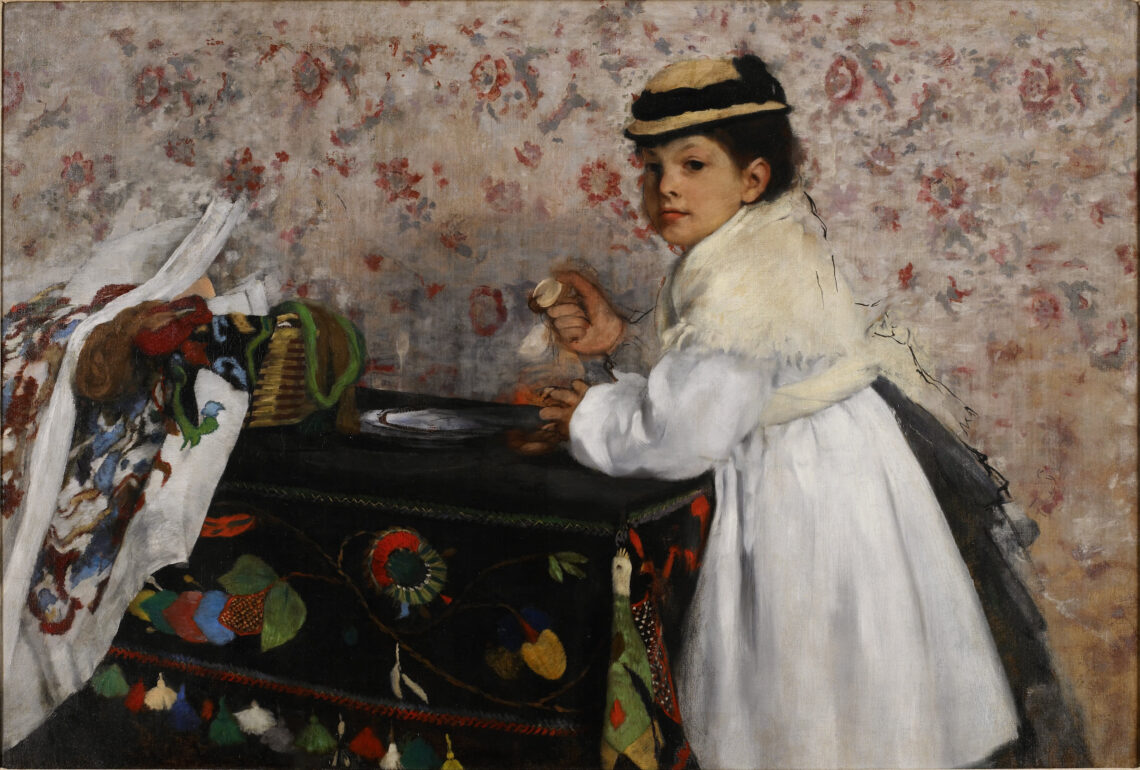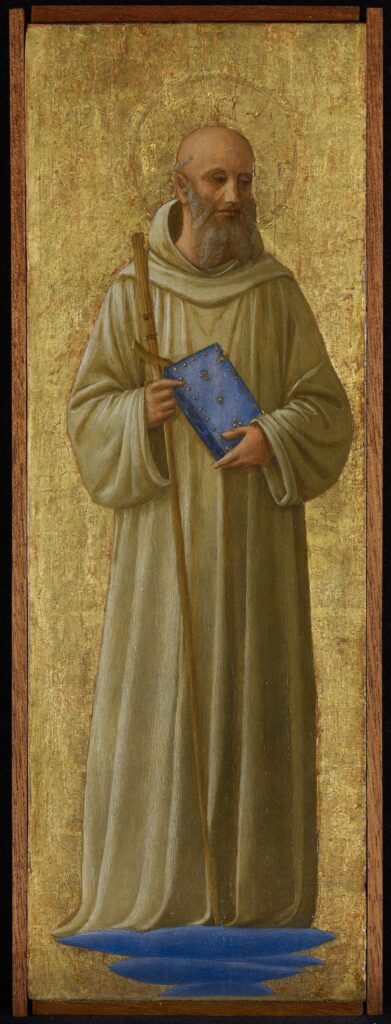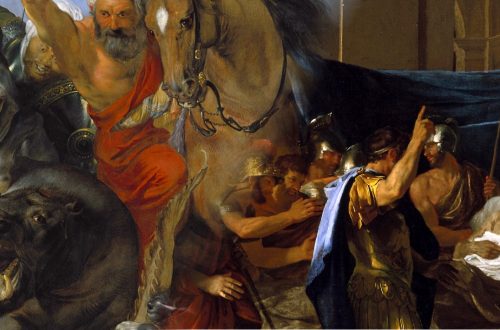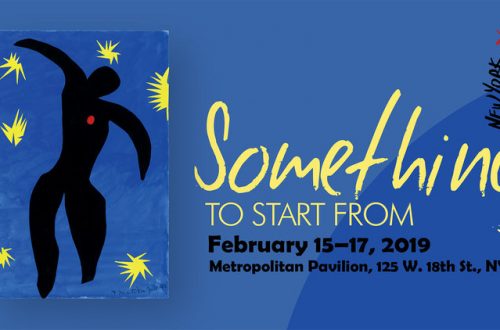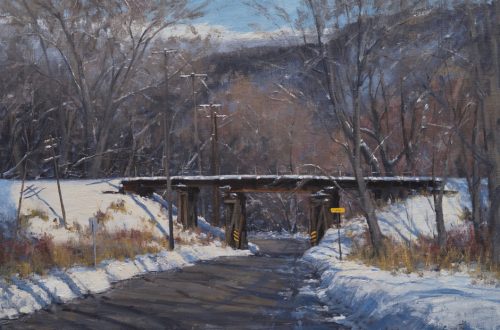by Andrew Carr
Canadian wildfires persisted throughout the summer. And in late July, from the top of the Mia’s enormous three-story windows I looked out across Washburn park at downtown Minneapolis. Its buildings were surrounded by a hard white distance, the negative shapes of the sky approaching between the towers. It was impossible to mistake this smoke for mist or fog, even apart from the acrid smell. Visually it wasn’t at all the “air” that the impressionists worked so hard to let into their paintings. It wasn’t refreshing. It didn’t refract and soften, but absorb and harden. And instead of opening up a sense of space, it tended to fill and close, making emptiness into a solid. It reminded me of a location that Italo Calvino describes in his fantastic Invisible Cities:
What makes Agria different from other cities is that it has earth instead of air. The streets are completely filled with dirt, clay packs the rooms to the ceiling, on every stair another stairway is set in negative, over the roofs of the houses hang layers of rocky terrain like skies with clouds. We do not know if the inhabitants can move about the city, widening the worm tunnels and crevices where roots twist: the dampness destroys people’s bodies and they have scant strength; everyone is better off remaining still, prone; anyway, it is dark.
It wasn’t dark outside the museum; the glare hurt my eyes. But the feeling of stasis that Calvino evokes, that was right, the feeling of confinement. And as I walked further into the museum, I wondered if I could find a painting with the same sense of space—full instead of empty.
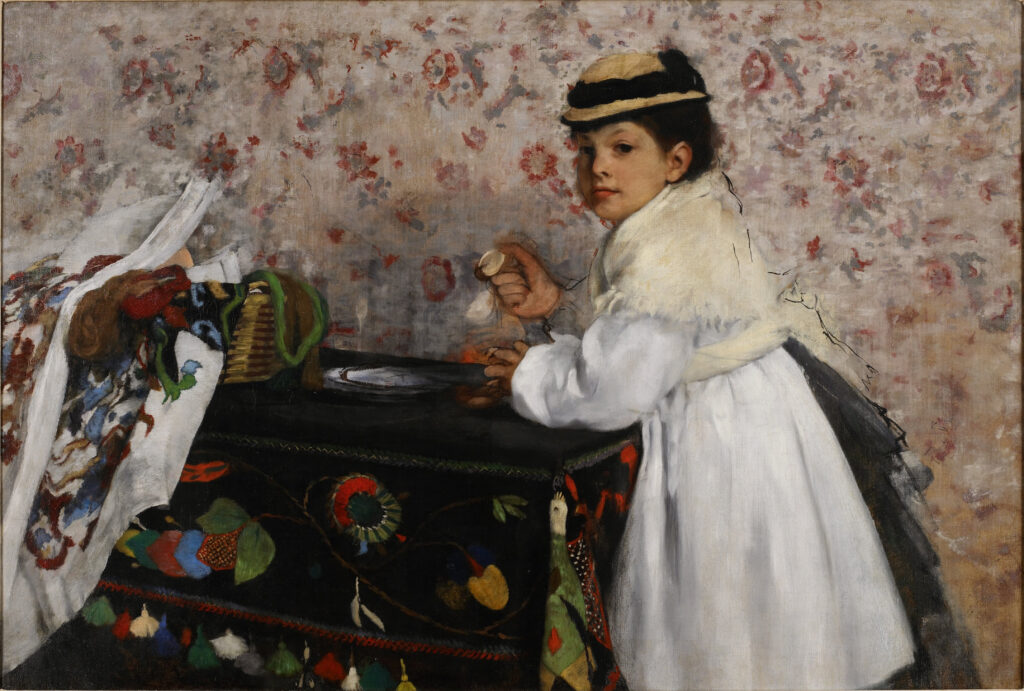
“The air we see in the paintings of the old masters,” Degas once said, “is never the air we breathe.” So I went first to the baroque and renaissance rooms. And although the old Dutch seascapes, and the Poussin that I passed didn’t have what I was after, there was a hint of it in Fra Angelico’s Saint Romuald. Its gold background seemed to surround and tangibly envelope the saint’s whole body. And Degas’ own painting of Mademoiselle Hortense Valpinçon came even closer. In it, the wallpaper seemed less to background the young model, than to swim or float around her. Its casually elaborated floral motif filled the air. And yet, if the far wall in Degas’ portrait seemed to approach, even found its way into Mademoiselle’s shawl and sleeve—those little flowers, like the play of light on Fra Angelico’s gilded panel, also lent a flutter to the air that kept it from solidifying.
By this point in the summer, the announcement of another air quality alert—with its encouragement to limit time outdoors and avoid exertion—had become routine. On these hot, smoked filled days, it was only natural to avoid the harsh light, to became still and sedate, to wonder if you felt a headache coming on. And with each alert had also come a reminder: that the fires in Canada, that weather throughout the world, was growing more erratic and intense due climate change. So that this feeling of confinement was filled also with the unique unease and paralysis that can so easily accompany that reality. The Angelico and the Degas did have a sense of space being full, but with energy—like a meadow full of butterflies, or a hall full of music. The view from the window made me think instead of a bucket full of thick white house paint, and the way that fumes from paint fill a room. So I continued to look.
In the end it was a Cezanne I sat down in front of, his Chestnut Trees at Jas de Bouffan. In his autobiography Living to Tell the Tale, the novelist Gabriel Garcia Marquez says that as a young man he consumed music with a voracious appetite, but for years refused to listen to anything composed by Mozart after being “assaulted by the perverse idea that Mozart does not exist, because when he is good he is Beethoven and when he is bad he is Haydn.” I often feel something similar about Cezanne. I can never quite tell if he’s a cubist or an impressionist, a follower of Pissaro or a predecessor to Picasso. Ultimately, this frustration has little to do with a need to place him art-historically. Really it amounts to an ongoing struggle to intuitively connect with his vision of things. It has never been easy for me to enter the world of his pictures. They seem almost to resist—not just interpretation, but immersion.
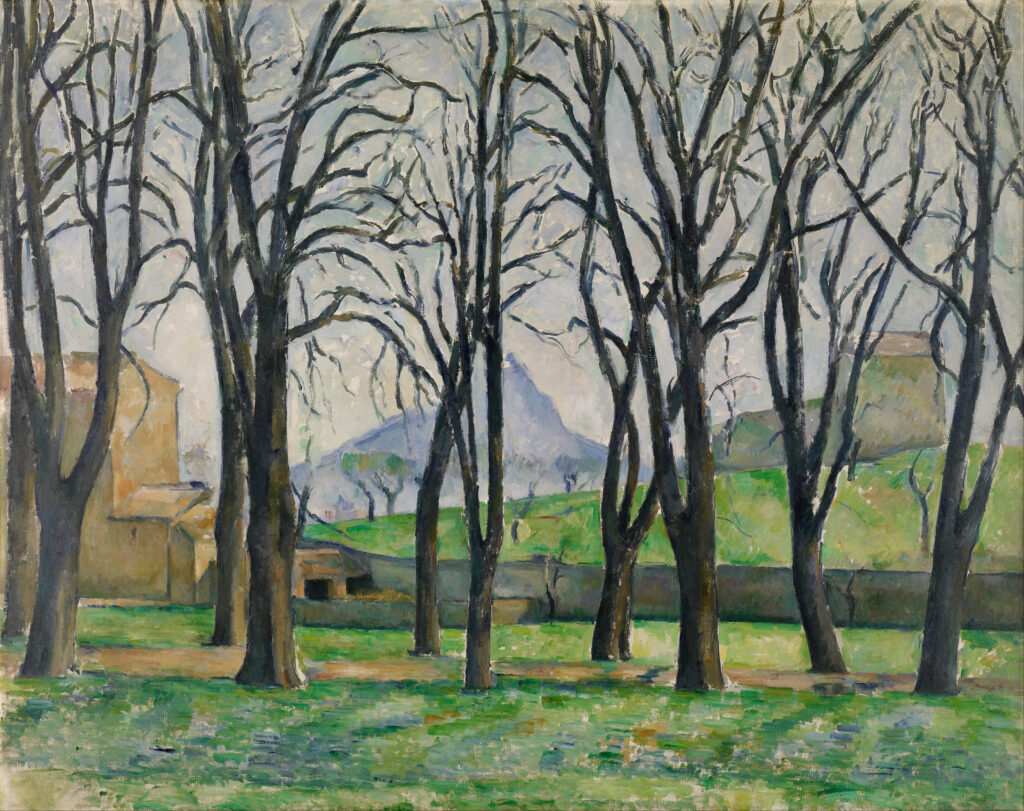
And precisely this resistance recalled what I’d seen outside the window. My own frustration at Cezanne’s inscrutability overlapped with the impassive atmosphere. There were plenty of paintings in the museum with solid, opaque skies. But I could recognize right away that is piece spoke to the Canadian smoke in a more significant way. So what did I see?
I saw trees standing along a path, from one end of the picture to the other, like they were waiting in line for something. Their empty branches touched the top of the frame. Between their trunks, above a low wall, outbuildings for the Cezanne family estate flanked the central, blue pyramid of Mont Sainte-Victoire, almost like the symbolic landmarks at the top of icons, but sanded down to ambiguous geometric simplicity.
As in the other pieces I had looked at, this background appeared to approach. Cezanne’s sky reached forward to hold the mountain, block houses, and trees in place. The sky had the same hard white florescence of the smoke outside. Dry patches of white canvas showed through, all about the system of sticks and twigs, wicking the moisture from the air, and leaving a chalky residue. And these busy treetops—far from providing the same play as Fra Angelico’s gold or Degas’ floral calligraphy—instead echoed Calvino’s surreal vision: the branches burrowed in and held fast to the sky like roots in the earth. Indeed each shape in the painting, positive or negative, near or far, seemed to have a firm purchase on its neighbors.
The writer Joachim Gasquet, records a revealing exchange with Cezanne that took place one late summer afternoon in the shade of a large pine tree. The painter, he says, was nearing the end of the day’s work and in high spirits. Stepping back from his canvas, he addressed Gasquet triumphantly:
Cezanne: I have my motif… (he clasps his hands). That’s what a motif is, you see…
Gasquet: What do you mean?
Cezanne: Ah yes… (he makes the same gesture as before, separates his hands, all ten fingers spread, very slowly brings them together again, then joins, clasps, clenches, intertwines them). That’s what has to be achieved…
Looking at Cezanne’s Chestnut Trees, I felt I had some inkling of what that enigmatic gesture meant.
Motif. I used that same word earlier in describing the wall paper in Degas’ portrait. In that context I meant the simple reoccurring unit in a pattern. I called it “casual” because Degas isn’t interested in reproducing this unit meticulously, but on the contrary seems quite happy to let each iteration take on its own unique profile. Cezanne’s motif is not casual at all, but the product of intense scrutiny. And his use of the word seems different in another way. Instead of the basic unit or element with which a larger pattern might be constructed—he seems to mean something like the insight that ties all of the diverse elements of reality into a meaningful whole. The motif compacts all the fugitive perceptions confronting the painter into something tangible, something graspable.
That, says Cezanne, is what a painting is. That is what has to be achieved.
Perhaps, I thought, the motif is like the particle that allows precipitation to collect and condense, that gives the ethereal just enough of a nudge to materialize. And yet, it would be wrong to call the motif the subject of the painting. Indeed Chestnut Trees at Jas de Bouffan seems somehow to have no subject at all. Landscapes often seem this way to some extent. By their very nature they complicate the limited and distinct focus that portraits or a still-lives create. Landscapes do not depict a thing—a person in a chair, a bowl of fruit. Instead they diffuse and distribute their concentration throughout a view, present a field of vision through which the viewer wanders. Nevertheless, even landscape painters tend to organize that field according to some sense of hierarchy. They prioritize. They emphasize. They heighten some elements and suppress others in order to guide the viewer, as it were, along a path. And ultimately to provide us with somewhere to stop and rest, a place to settle our attention. And that destination provides landscape with a kind of subject.
But to my eye, Cezanne’s painting avoids even this limited sense of subject. Out of the whole row of trees, there is no particular one underneath which one can stand, so to speak. No element of contrast, of heightened detail or color picks out a place for us. The literal path—so often used by painters to lead one into the image—here goes nowhere. We are not on it. The trees almost resemble iron bars. If the motif organizes, it does so not as the subject around which the rest of the painting gathers, and towards which each element encourages us towards. Rather, the motif is the total ensemble. It is the entire structure of relationships. It pervades the work, and so cannot be found in any one place. It’s everywhere and nowhere.
And it seemed to me as I looked, that this quality of everywhere-and-nowhere, was also connected to the nature of that smoke filled afternoon view. First because the smoke was not a subject itself, was still not quiet a tangible thing, though it wasn’t nothing either. And second, and more importantly, because that sense of everywhere-and-nowhere was precisely the way that the problems of climate change have appeared to me. As a constant background conversation, an ongoing awareness, a photo of ice burgs, a chart of temperatures, a story of famine, a political battle, a point of contention, a clear imperative to uncertain action—but never as one single thing in front of me. Never here in front of me, not a person in a chair, not a bowl of fruit.
The thick white smoke had lingered day after day, halfway between the abstract and the concrete, a perfectly imperfect embodiment of those feelings, filling the empty space of a neighborhood block, suffusing a city skyline. Turning an idea into something I could see and smell and feel in my lungs. But not quite touch. It brought the reality of climate change closer to home—but with all its uncertainty and ambiguity intact. Nevertheless, the smoke throughout downtown was surely evocative of Cezanne in this: it made the landscape strange, it quietly undermined a sense of being settled and secure and at home.
And as I stood up to leave, the piece took one final aspect. Upon first sitting down and trying to describe my way in, I said the trees stood along the path as if waiting in line. Waiting for what I wondered. Was there, in all this tension, in the clenched, interwoven fingers of Cezanne’s motif, an expectation of inevitable release? An anticipation of relief? Like the relief that comes with clarity, even a terrible clarity. As I left, that impassive painting looked to me like the face of an aging dam.
Downstairs, stepping through the museum doors, I found that it had suddenly grown dark. There was a new smell in the air too: the smell of rain. Which, as I ran to my car, suddenly began pouring down.

Andrew Grum Carr is an artist, writer, and teacher from St. Paul MN. He writes short fiction and works in watercolor. He loves cinema, the library, and Saturday night jazz. You can find his artwork at www.andrewgrumcarr.com or follow him on Instagram @andrewgrumcarr.
Image attributions. Note: By clicking on the images in this article, you can travel to the MIA’s website where you will find a higher-resolution image. Even better, visit the museum yourself!
“Chestnut Trees at Jas de Bouffan,” c. 1880, Paul Cézanne, Public domain, via Wikimedia Commons
“Portrait of Mlle. Hortense Valpinçon,” c. 1871 Edgar Degas, Public domain, via Wikimedia Commons
“Saint Romuald,” c. 1440, Fra Angelico, Public domain, via Wikimedia Commons
